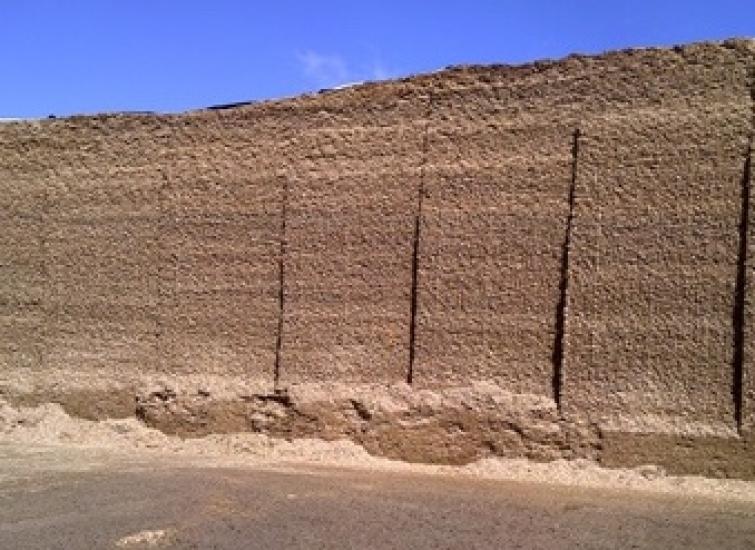We’ve been happy to have Advanced Robot join our team, we are really starting to see the benefits of their experience. We’ve achieved the target of 2.8 visit average whilst grazing with the ABC system.
Getting to grips with forage
Grass silage quality has been variable this year, she how can producers redress the balance if crops have fallen below expectations. Wendy Short reports from the Dairy Farmer.

Producers who made an early start to silage-making are generally pleaseed with the results, but there were some disappointments in cases where first cuts were delayed by wet weather, says Will Tulley of Advanced Ruminant Nutrition.
He says, "May was a cold, wet month, leading to some low-protein/ high fibre crops which fell short on quality. Meanwhile, June saw high temperatures and low rainfall, which meant some second-cut grass silages were lacking, in terms of both quality and quantity."
"Conditions were more favourable in the second half of the season, allowing for a degree of catch-up."
Forage budgeting is a fundamental element of any winter feeding plan for dairy cows, he says.
"A simple calculation of volume can be made to give an estimation of tonnes of freshweight available. This practice should be continued on a monthly basis, because silage density and dry matter content will change as the season progresses. Regular monitoring will give the opportunity to track how much cattle are eating and, over time, this will give a fairly accurate picture of monthly use, so any supplementary feeding which might be required can be planned ahead."
The estimated silage tonnage should be considered alongside an initial analysis of nutritional content, and the excercise should be repeated on a monthly basis, he says, as grass silage quality will also fluctutate throughout the storage period. On farms where a deficiency in forage stocks has been identified, he suggests a review of livestock numbers.
Questions
Hs say, "Questions to ask would include whether there are any cows in the milking herd which are not performing to maximum efficiency; this will be particularly important in a climate of low milk prices and high feed costs. Cows with a prolonged history of mastitis or lameness may not be making a sound financial contribution to the bottom line. There may also be opportunities to reduce heifer replacement numbers of cut down on the number of beef calves to reduce winter forage demand."
Forage allocation is another important considerations.
"The better quality silages can be reserved for the milking herd, with lower quality material offered to youngstock or dry cows. Another alternative is to combine the material from two feed clamps into one feed, by mixing together poorer quality silage with leafier material of a higher nutritional value."
"Some producers will reserve their better silage for times when milk prices are on the higher side and open up poorer quality clamps when returns dip."
Supplementing home-produced forage with bought in crops may offer a solution in some situations, although the economic viability of purchased big bale silage or clamped material may depend on travelling distance.
Mr Tulley describes moist feeds, such as brewers grains and Trafford Gold, as 'forage extenders' for farms where clamps are expected to run before first cut 2024 or grazing turnout.
Meanwhile, grass silage protein deficiencies can be balanced through the addition of rapemeal or distiller's grains, as well as soya, if milk contracts permit. Urea is also a good source of protein.
Mr Tulley says, "Urea is relatively low cost and it can help to balance a ration where forage is short of rumen degradable protein. It feeds microbes which degrade fibre into protein and will help to maximise dietary forage."
Energy Source
Rumen protected fat is a valuable energy source says Mr Tulley. "It is not a cheap supplementary feedstuff, but is is very high in energy density. Research has shown it has the potential to enhance fertility, so it can have a beneficial effect in the long-term."
"Starch and sugar can also be fed to offset low-energy silages in the form of small grains, such as wheat and barley, or by adding maize to the diet. However, care much be taken to limit cereal intakes, as a high inclusion rate can increase the risk of rumen acidosis, especially when fed in combination with low dry matter, acidic grass silage."
Other comparatively cheap feeds include root crops, which can fully, or partially, replace more expensive bought-in concentrate pellets. They are typically low in fibre and high in carbohydrates and should be treated as a concentrate, rather than a forage.
Mr Tulley says, "Winter ration formulation is not simply a matter of adjusting the feed for maximum yield. Prior to making any feed purchases, it is worth consulting the farm nutritionist and using a computer software program to work out the most cost-effective plan."
〈 BACK



